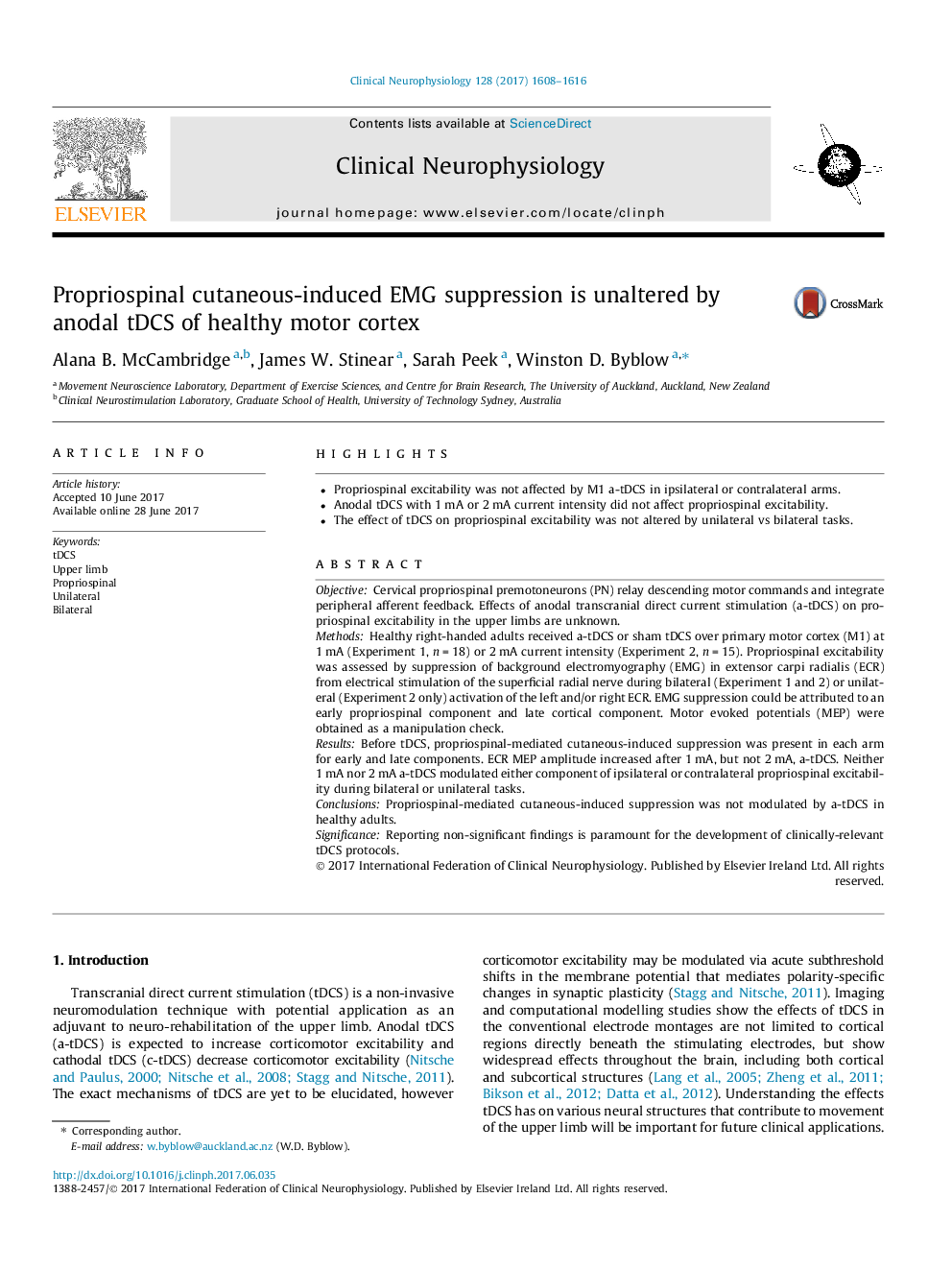| Article ID | Journal | Published Year | Pages | File Type |
|---|---|---|---|---|
| 5627247 | Clinical Neurophysiology | 2017 | 9 Pages |
â¢Propriospinal excitability was not affected by M1 a-tDCS in ipsilateral or contralateral arms.â¢Anodal tDCS with 1 mA or 2 mA current intensity did not affect propriospinal excitability.â¢The effect of tDCS on propriospinal excitability was not altered by unilateral vs bilateral tasks.
ObjectiveCervical propriospinal premotoneurons (PN) relay descending motor commands and integrate peripheral afferent feedback. Effects of anodal transcranial direct current stimulation (a-tDCS) on propriospinal excitability in the upper limbs are unknown.MethodsHealthy right-handed adults received a-tDCS or sham tDCS over primary motor cortex (M1) at 1 mA (Experiment 1, n = 18) or 2 mA current intensity (Experiment 2, n = 15). Propriospinal excitability was assessed by suppression of background electromyography (EMG) in extensor carpi radialis (ECR) from electrical stimulation of the superficial radial nerve during bilateral (Experiment 1 and 2) or unilateral (Experiment 2 only) activation of the left and/or right ECR. EMG suppression could be attributed to an early propriospinal component and late cortical component. Motor evoked potentials (MEP) were obtained as a manipulation check.ResultsBefore tDCS, propriospinal-mediated cutaneous-induced suppression was present in each arm for early and late components. ECR MEP amplitude increased after 1 mA, but not 2 mA, a-tDCS. Neither 1 mA nor 2 mA a-tDCS modulated either component of ipsilateral or contralateral propriospinal excitability during bilateral or unilateral tasks.ConclusionsPropriospinal-mediated cutaneous-induced suppression was not modulated by a-tDCS in healthy adults.SignificanceReporting non-significant findings is paramount for the development of clinically-relevant tDCS protocols.
